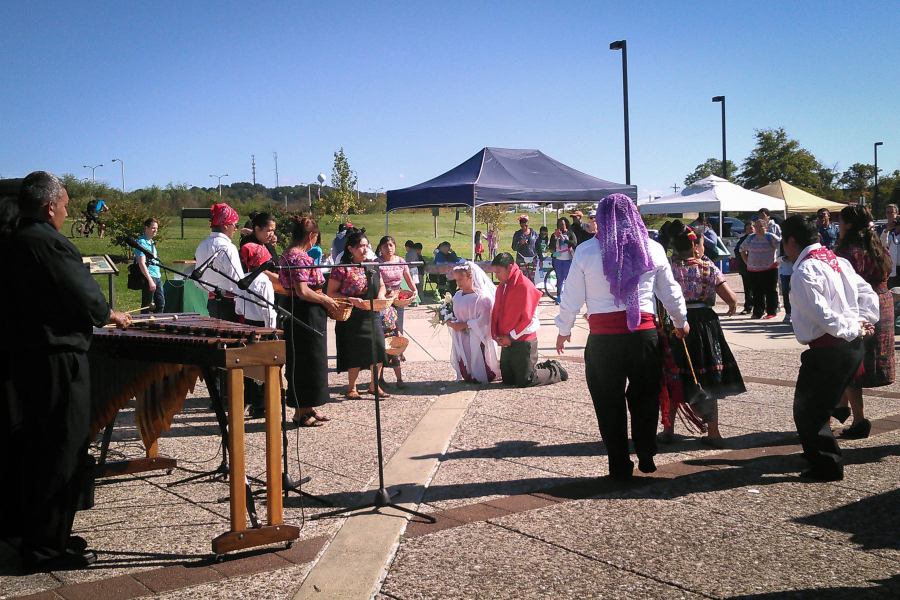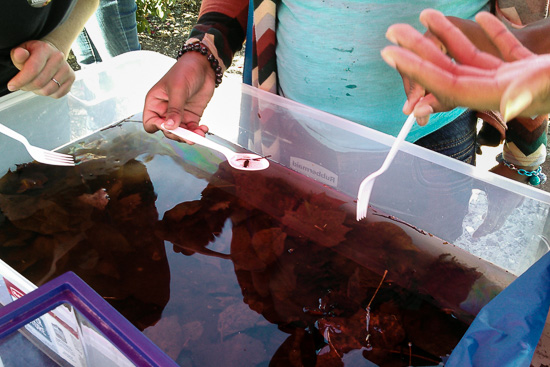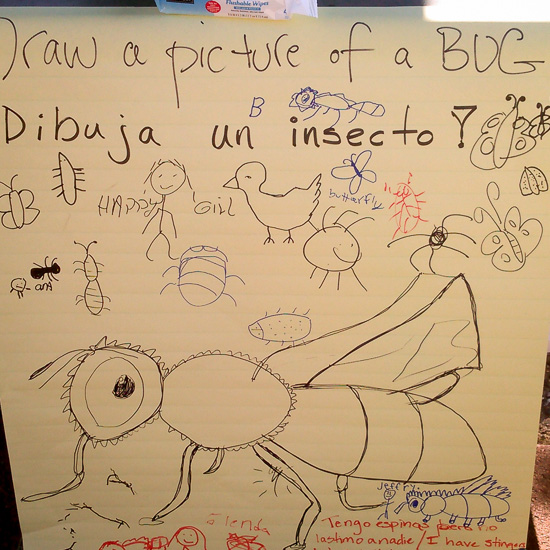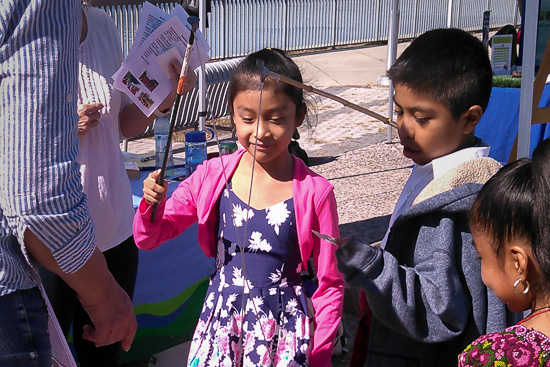Festival del Rio Anacostia
Communities embrace environment and culture along a Maryland riverfront

On October 15th, alongside a mud-banked river usually empty of life, little children skip among brightly tented booths, carrying fishing lines and nature-inspired passport books. Community members watch water run clear through a root-planting demonstration or try to spot American eels in a cloudy-water tank teeming with fish. In the air, marimba music and the tantalizing smells of Latin fare mingle with the musical murmur of combined Spanish and English conversations. A few feet away, a paper mural of insects is constantly expanded as everyone tries their hand at drawing local bugs. This is the Festival del Rio Anacostia, and it’s impossible to decide whether you are at an environmental event or a cultural celebration.

That perfect fusion is certainly true for Ricardo, an English-speaking local resident who heard about the event through a Spanish-scripted Facebook post. Recognizing the word “festival,” he thought it’d be a nice way to spend an afternoon and enjoy some good food. Not until arriving did he realize the festival was heavy with nature awareness. “That’s good!” he exclaims. “We have to live in it. Anything we can do to make it better for me, for you, for the younger generation coming up, you know… be a participant. You learn and take it back to your own neighborhood.” He planned to take pictures and share them with people in his neighborhood that couldn’t make it that day—allowing them to witness the good food, dancing and environmental lessons alike.

Coming together and collaboration were evident in the creation of the festival as much as the event itself. It began as an idea of the Latino Outreach Subcommittee of the Anacostia Watershed Citizens Advisory Committee. Before long, a diverse array of government bodies, citizen committees and environmental organizations offered their capacities and expertise. The space at Bladensburg Park was donated, along with the tents and chairs. Music was provided by Guate Marimba and entertainment by Despertar Maya Ma’am in conjunction with Asociacion de Guatemaltecos Sin Fronteras. Parks and Recreation Maryland-National Capital Park and Planning Commission, Anacostia Watershed Society, Chispa, Metropolitan Washington Council of Governments, Interstate Commission on the Potomac River Basin, Friends of Sligo Creek, Chesapeake Bay Trust and Anacostia Riverkeepers were all heavily involved in making the festival a reality.

Being aware of your environment and learning to care for it go hand in hand, and organizers do their best to highlight that intersection. Most booths have both English- and Spanish-speaking personnel; at others, roving translators are available and happy to help. For those without readily available transportation, buses run throughout the day to pick up attendees for the festival and later take them back home. “In many cases due to language and economic barriers, Latinos do not have an opportunity to recreate in the Anacostia River,” wrote Chispa Maryland Program Director Ramon Palencia-Calvo. “[This festival] open[s] the river to this environmentally underserved community.”
Indeed it does, and plans are already underway for a Festival del Rio Anacostia 2017. For more information or to get involved with next year’s festival, contact rpcalvo@mdlcv.org.

Comments
There are no comments.
Thank you!
Your comment has been received. Before it can be published, the comment will be reviewed by our team to ensure it adheres with our rules of engagement.
Back to recent stories